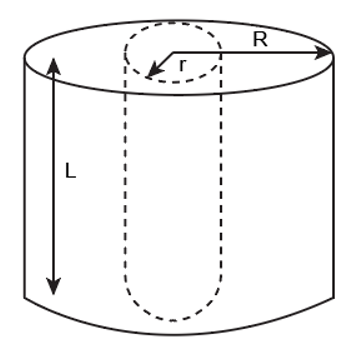Gauss law related the flux through a surface and the net charge enclosed by the surface. So, here the normal vector to the surface is , the area of the Gaussian surface is dA. If the medium in between the conductors in air, therefore, the permittivity of free space is . But if the medium happens to be other than air, like plastic, as stated in the problem, the equation may be written as:
Here, the permittivity of the medium is .
The plastic cylinder of radius R is given a positive charge -Q by irradiating it with protons and the charge is distributed in the volume of the cylinder. If its length be L, then, the charge per unit volume of the cylinderis given by:
A Gaussian cylinder of radius such that will be:

The charge contained by the Gaussian surface is given by:
The electric field at a distance from the center is given by using this expression in equation (1) as:
The electric flux emerges out normally from the surface, therefore, the angle between and is zero. So:
The electric field is constant over the surface therefore:
The surface area of the Gaussian cylinder of the radius r and length L is given by:
Thus the equation (3) will be:
Now solving for E as:
Therefore, the electric field in the interior of the plastic cylinder is .





